If you are looking to Prevent Slugs and Snails in the Garden without using chemicals, these tips will help!

Slugs and snails are the least kind of visitors you want in your garden. These pesky critters can finish up your vegetable and flower patches in a week’s time, and you see them a lot, crawling everywhere on rainy days, which looks so gawky. If you’re reading this, obviously, you’re looking for solutions listed below!
What Attracts Slugs and Snails to Your Garden
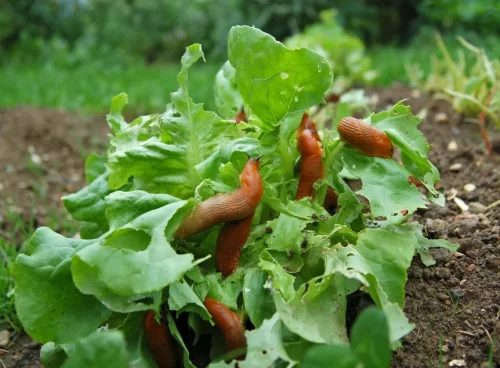
Before we start learning about their disposal, let’s find out what attracts them.
1. Wet and Moist Soil
Slugs and snails are slimy creatures attracted to damp and wet soil. Your garden is likely to be infested with slugs if you overwater the soil or if it gets low sunlight.
2. Nutrient-rich Soil and Leafy Plants
Slugs loiter around in search of food and settle near veggies and flowers. They feed on plants like lettuce, basil, hostas, and marigold.
3. Fungus
Slugs and snails feed on decaying matter and are, therefore, attracted by fungi. Keep a check on the fungus outburst in your garden to bar away these critters.
4. Wet Wooden Logs and Stones
As slugs seek shelter on the go, wet wood logs or the shade of large stones become their hanging-out spot. The moisture in such surfaces attracts them, and they settle in the gaps and the shade of the rocks.
5. Overgrown Grass
Slugs prefer long, overgrown grasses so that they can cling to the lower surfaces and get some relief from the hot, dry grounds. Also, dense grassy, weedy spots have more moisture content than barren lands during the dry seasons.
How to Prevent Slugs and Snails in the Garden
1. Keep Your Garden Clean

Clean the garden edgings, hedges, and flower beds so that the snails can not seek shelter there. Remove fallen fruits, foliage, and other appealing organic stuff they love.
A poorly managed compost, leaves, or grass can also give them food, shelter, and a favorable environment for laying eggs.
2. Combat Slugs Early
Start killing them early in the growing season before they reproduce, i.e., spring. You will be able to control their population effectively this way.
3. Water in the Morning
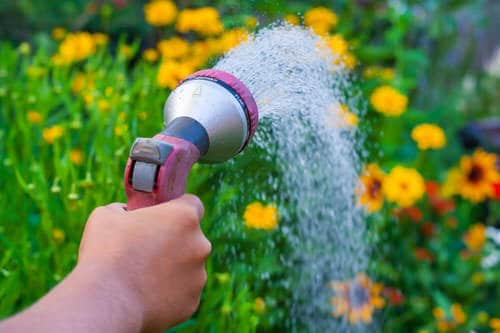
Water in the morning instead of the evening. Slugs and Snails are nocturnal beings and are favored by humid nights. They love moisture, and watering in the evening creates favorable conditions for them to thrive.
4. Hunt them in the Evening or Early Morning
Slugs and snails are active at night or when it is slightly dark. It is the best time to pick them up and throw them away. It is labor-intensive but effective if performed regularly for several weeks.
5. Set Up Beer Traps
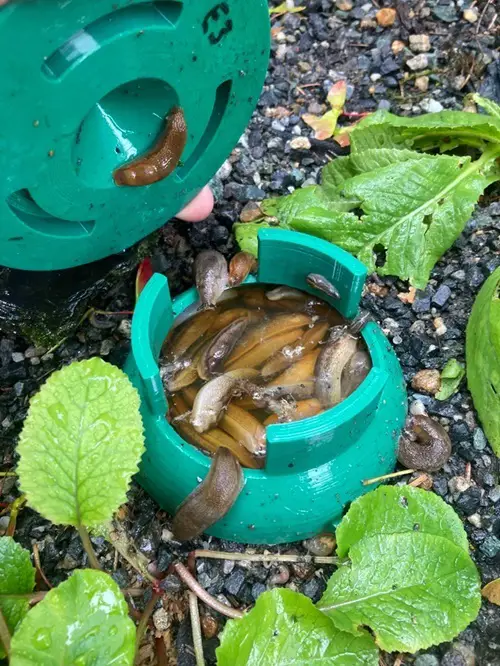
So, how do you kill slugs in the garden? Beer! Make a simple trap by filling a shallow container like a pie tin with beer. The yeasty aroma attracts slugs and snails, enticing them to crawl in and ultimately drown. It’s a practical and straightforward method to prevent slug and snail populations in your garden. Here are more beer uses for your garden and plants.
6. Use Grapefruit or Melon Rinds
You can use grapefruit or melon rinds as traps for slugs and snails, place them at strategic spots, and once they’re attracted, remove them.
7. Pruning and Spacing
Keep the air circulation good in your garden by properly spacing and thinning plants. This allows the soil surface to dry more efficiently, discouraging slugs and snails from using moist areas as pathways.
8. Copper Tape Trap
You can apply copper tape to raised beds to prevent slugs and snails. The copper reacts with their slime, creating a mild electric shock that repels them. This uncomplicated solution adds a layer of protection to your raised garden beds and veggies.
9. Plant Something Aromatic
You should grow herbs with aromatic leaves like lavender, rosemary, and sage, which slugs and snails tend to avoid. You can also choose plants with woody, fuzzy, or prickly foliage to deter these pests.
Slug Prevention Tip: You can strategically use plants that attract slugs, such as marigolds, to lure them away from more vulnerable plants.
10. Create an Organic Bait for Slugs and Snails
You can create one by mixing equal parts of flour and cornmeal, adding a pinch of yeast, and forming small balls. Place these bait balls strategically in your garden.
11. Handpick Them
While it may seem different, handpicking slugs and snails is highly effective. Check your plants in the early morning or late evening when they’re mostly active, and just pick them up. But don’t use your bare hands!
Slugs and snails are generally harmless, but the slime they leave behind might be transferred here and there, causing irritation. Put on a pair of gloves before you pick them up. This hands-on approach provides a direct and immediate solution to pest control.
12. Vinegar Slug Control
Don’t want to use your hands? Opt for a hands-off approach by spraying slugs and snails with vinegar. This solution, consisting of 1 cup water and 1/2 cup vinegar, melts the pests before your eyes. Vinegar is also super effective for pests.
Some gardeners believe that the dead slug bodies help deter other slugs from the area, making it a natural and efficient solution. However, this should only be done as a last resort.
13. Introduce Natural Predators
You should foster a garden environment that attracts natural predators such as birds, frogs, and toads. These creatures will work for you and help keep the slug and snail population in check, contributing to a balanced and pest-resistant ecosystem.
14. Sprinkle Crushed Eggshells
Crushed eggshells act as a deterrent when sprinkled around plants. Their sharp edges discourage slugs and snails from crawling over them. This simple trick can prevent snails and slugs in the garden around small plants.
15. Diatomaceous Earth
You can also sprinkle diatomaceous earth (DE) around plants to create a barrier against slugs and snails. The powder, derived from fossilized aquatic organisms, has sharp edges that work the same as crushed eggshells.
16. Kill Slugs with Coffee Grounds
Coffee grounds are the answer to “How to kill slugs?” You can sprinkle used coffee grounds around plants, as the caffeine in coffee is toxic to slugs and snails. A simple method, this not only deters pests but also repurposes kitchen waste. Here’s a guide to help you use coffee grounds in gardening.
17. Scatter Citrus Peels
You should grow citrus peels from oranges, lemons, or limes in your garden. Slugs and snails are drawn to the fruits and will crawl onto the peels instead of your plants. You can remove them easily in the morning or evening.
18. Wood Chip, Gravel, or Bark Border
Using wood chips, gravel, or bark, you can also create a protective barrier around your garden beds. These materials make it challenging for slugs and snails to crawl over, preventing them.
19. Pull Out All the Weeds
You should get rid of all weeds from your garden, as they are hiding places for slugs and snails. By disrupting the habitat of snails and slugs, you will reduce their presence in your garden.
20. Plant a Garlic Barrier
Plant garlic around your garden borders to create a natural barrier against slugs and snails. The strong scent of garlic acts as a deterrent, keeping these pests away from your plants.
21. Create a Slug Friendly Area
Instead of killing slugs and snails or sending them away, you can create a shady corner away from your garden beds where they can live peacefully. All you need are some flat boards on the ground, slightly elevated.
You can plant snail and slug attractors like Marigolds, Hostas, Delphiniums, Dahlias, or Petunias and keep the soil moist so these critters stay in the area and do not harm other plants.
22. Mulch with Caution
While mulch can help retain moisture, avoid using thick layers directly around plants, as this can create a damp hiding spot for slugs.
A thick layer of mulch provides a cool, damp hiding place for these plant predators during the day. They can easily crawl under the mulch to escape the sun and birds.
Instead of a thick layer, aim for a 1-2 inch layer of mulch around your plants. This allows for better airflow and faster soil surface drying, making it less hospitable for slugs and snails.
Slug Prevention Tips
- Use salt to kill slugs; sprinkle. Don’t know what happens when you put salt on slugs? It draws the water out of their soft bodies.
- Use lime and sawdust as a barrier around the plants you want to protect; you can also use eggshells. This prevents the slugs from reaching your plants.
- Grind horse chestnuts and scatter near the plants. It keeps the slugs and snails at bay.
- One of the easiest ways to prevent slugs is to get a duck! It loves to eat them with a good appetite. Another advantage of having ducks is that they fertilize the garden efficiently with their droppings.


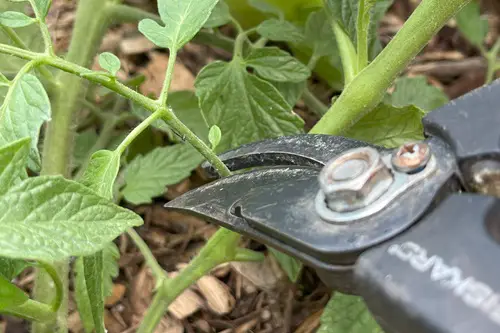
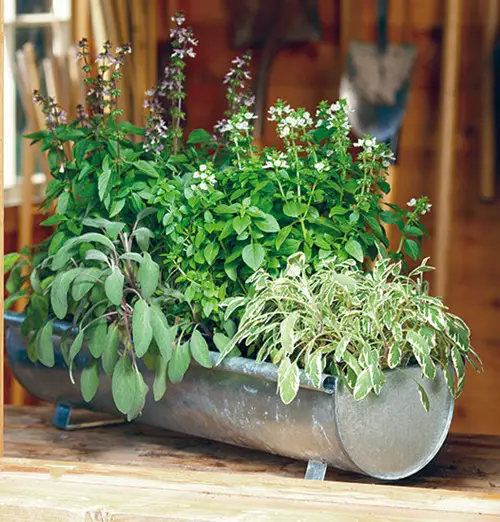


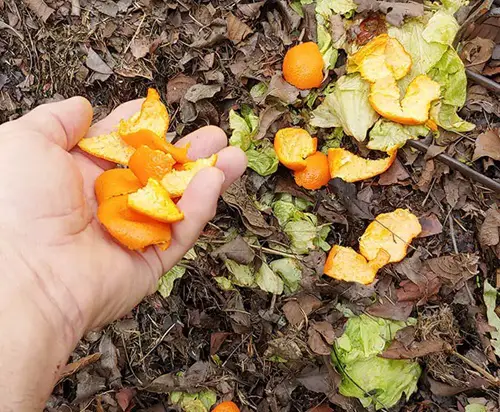
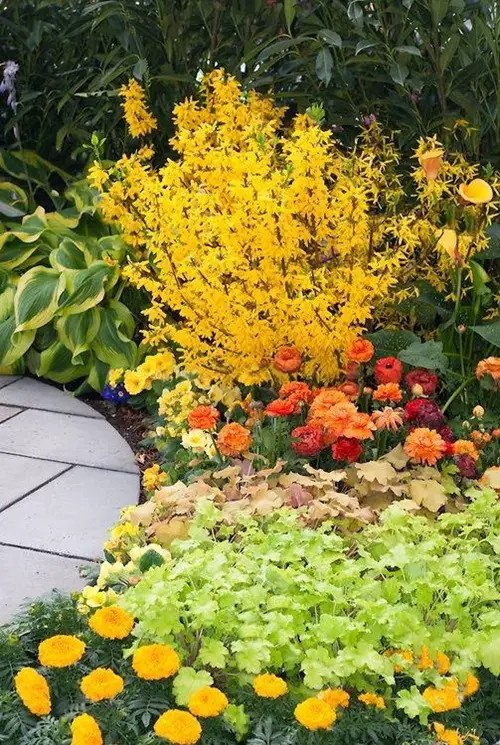

Verry good ideas.
We live in Southwest Colorado, elevation being 7,000 ft. The slugs survive through the winter snow! We have lots of pine trees. It’s a never-ending battle to keep up with raking the needles. The slugs like to hide under them. To try to pick them up with tweezers, etc. would be impossible. Any other ideas for the armies of slugs that never die off, would be gladly welcomed!
I took ash from my wood stove last year and spread it around the garden edges. I hated that I would bring home a new plant and it would be demolished by morning. I heard of this idea and it really worked. I also put down crushed egg shells. If I see them still around I get my salt shaker.
A few years back we lived by a treed area and it was a constant battle, one night armed with salt shakers the grand kids and I went hunting. with in two hours we eliminated over 500 of them. Unbelievable, but it saved most of my strawberries that year. Good luck.
Dee i have found (by accident) that if you sprinkle “Miracle Grow” Plant food (the blue crystals) it kills them instantly….soooo next time buy a big economy box of “Miracle Grow” -do not dilute into water just sprinkle around the plants and walk away —oh yeah your plants will thank you as well—Win/Win!
Finally the Miracle Grow is actually cheaper than the basic snail/slug killer sold in stores
I also like to wind copper tape around my pots and raised beds. Apparently its really uncomfortable for them, so they don’t like crossing it. You have to make the line broad, but seems to be working well so far